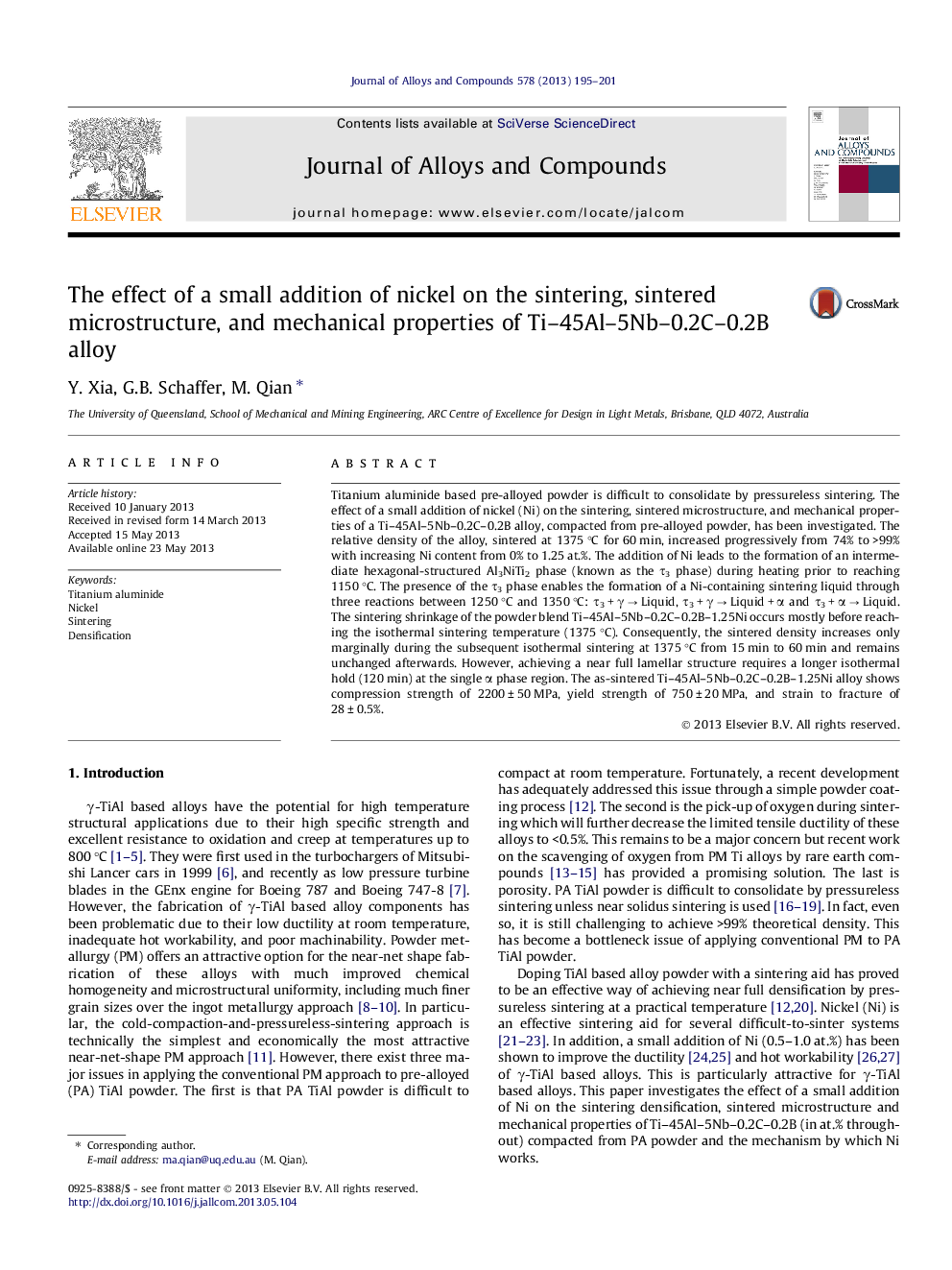| Article ID | Journal | Published Year | Pages | File Type |
|---|---|---|---|---|
| 1613673 | Journal of Alloys and Compounds | 2013 | 7 Pages |
•A small addition of Ni (⩽1.25 at.%) transforms the alloy from essentially unsinterable to fully sinterable at 1375 °C.•A τ3 phase (Al3NiTi2) forms during heating before reaching 1150 °C which enables subsequent liquid formation.•The as-sintered Ni-doped alloy shows excellent compression properties.
Titanium aluminide based pre-alloyed powder is difficult to consolidate by pressureless sintering. The effect of a small addition of nickel (Ni) on the sintering, sintered microstructure, and mechanical properties of a Ti–45Al–5Nb–0.2C–0.2B alloy, compacted from pre-alloyed powder, has been investigated. The relative density of the alloy, sintered at 1375 °C for 60 min, increased progressively from 74% to >99% with increasing Ni content from 0% to 1.25 at.%. The addition of Ni leads to the formation of an intermediate hexagonal-structured Al3NiTi2 phase (known as the τ3 phase) during heating prior to reaching 1150 °C. The presence of the τ3 phase enables the formation of a Ni-containing sintering liquid through three reactions between 1250 °C and 1350 °C: τ3 + γ → Liquid, τ3 + γ → Liquid + α and τ3 + α → Liquid. The sintering shrinkage of the powder blend Ti–45Al–5Nb–0.2C–0.2B–1.25Ni occurs mostly before reaching the isothermal sintering temperature (1375 °C). Consequently, the sintered density increases only marginally during the subsequent isothermal sintering at 1375 °C from 15 min to 60 min and remains unchanged afterwards. However, achieving a near full lamellar structure requires a longer isothermal hold (120 min) at the single α phase region. The as-sintered Ti–45Al–5Nb–0.2C–0.2B–1.25Ni alloy shows compression strength of 2200 ± 50 MPa, yield strength of 750 ± 20 MPa, and strain to fracture of 28 ± 0.5%.
